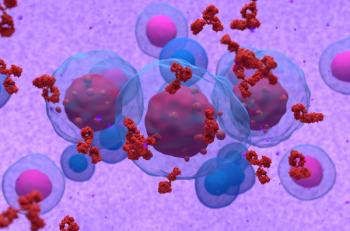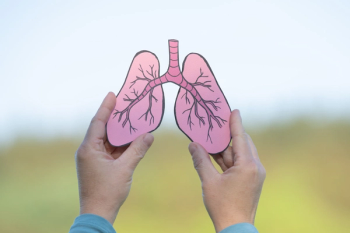
The STRIPE Initiative: Advancing Pharmacogenomics Through Standardized Practices and Collaborative Partnerships
Sara Rogers, PharmD, discusses the formation and goals of the Standardizing Laboratory Practices in Pharmacogenomics (STRIPE) initiative, which seeks to standardize pharmacogenomic practices and improve clinical decision-making by establishing consensus across all stakeholders.
Pharmacy Times interviewed Sara Rogers, PharmD, president of the American Society of Pharmacovigilance (ASP) and clinical assistant professor at Texas A&M University, on the Standardizing Laboratory Practices in Pharmacogenomics (STRIPE) initiative, spearheaded by ASP to address adverse drug events (ADEs) through pharmacogenomics (PGx). Rogers explains that STRIPE aims to standardize the translation of genetic findings into clinical decisions by aligning approaches across stakeholders.
STRIPE was formed after the FDA established the Center for Devices and Radiologic Health within the FDA. The FDA then set a strategic priority of participating in 10 collaborative communities for 10 different medical devices. STRIPE is the collaborative community for pharmacogenetics testing as a diagnostic tool. STRIPE also follows the FDA's collaborative community framework, bringing together stakeholders to develop best practices for pharmacogenetic testing.
The US Pharmacopeia (USP) became involved in STRIPE after recognizing pharmacogenomics as a key area for standards development and joined the initiative to contribute to its goals. The first STRIPE Annual Meeting and Consensus Workshop was held from October 23 to 25, 2024, at USP’s headquarters in Rockville, Maryland, and this inaugural meeting focused on refining approaches in 6 priority areas: health equity, clinical decision support, laboratory challenges, study design, clinical challenges, and education. Future meetings are planned, with the next meeting in 2025 likely to take place in Helix Park, Houston, to continue to evolve and develop STRIPE’s mission of consensus across stakeholders in the field.
Pharmacy Times: What is Standardizing Laboratory Practices in Pharmacogenomics (STRIPE), and how was it formed?
Sara Rogers, PharmD: STRIPE is an initiative of ASP. Our entire mission is to address the high rate of adverse drug events in the US, and we know that there's a lot of genetics that play a role in drug response. So we've been very involved in the personalized medicine space, and in 2018-2019 FDA had sent out some safety communications to laboratories offering pharmacogenetics testing, and it seemed like there was some variation in the way that labs were translating the genetic finding into a phenotype and then how that was used to inform clinical decisions at the point of care, and the type of information that was being provided back to clinicians. So that was kind of a call to action for the community to come together and kind of align approaches and is there, for example, a standardized approach to drug-gene evaluations and how we look at the evidence. So, STRIPE was really formed to better define some of the challenges in our space.
What's unique about STRIPE is that it follows the FDA’s collaborative community framework. So, FDA had set the Center for Devices and Radiologic Health within FDA, and it set a strategic priority to participate in 10 collaborative communities for 10 different medical devices. So, STRIPE is really the collaborative community for pharmacogenetics testing as kind of a diagnostic tool. So that's a little bit of the background on the impetus for forming STRIPE, as it’s really a forum to convene stakeholders to have some of these discussions around how do we push this field forward through standardized approaches.
Pharmacy Times: How did US Pharmacopeia (USP) become involved in the STRIPE Annual Meeting and Consensus Workshop, and how will STRIPE and USP continue to work together in the future?
Rogers: Just to give a little bit of background on how USP and STRIPE came together. With STRIPE, we've had an ongoing effort to do outreach. Our goal is really to get a lot of different health care sectors involved, organizations within those sectors, and individuals with diverse perspectives and experiences to inform the STRIPE process and the STRIPE deliverables that we produce to make sure that any deliverables meet the needs of all of the different stakeholders involved in the pharmacogenetics testing ecosystem. So USP and Blaine Groat, PharmD, [senior scientist at USP], today in his presentation, mentioned that they are looking to explore new areas for standards development, and they identified through their own internal surveys that pharmacogenomics was a big opportunity area for USP as a standard setting organization. So, they actually had identified STRIPE as one of the stakeholders in the pharmacogenomics community, and they actually joined STRIPE as a member last year and have been just very involved in providing a lot of guidance and information and support in bringing this meeting to fruition. So, it's been a really great collaboration and opportunity to partner with USP.
Pharmacy Times: Following this first STRIPE Annual Meeting and Consensus Workshop held at USP's headquarters in Rockville, Maryland in 2024, are there plans for future STRIPE meetings as well?
Rogers: In terms of future meetings, we're already discussing that. When we started the idea to have this in-person meeting, this is the first in-person meeting for STRIPE. We have a different format than even anyone on the 30-person planning committee had ever done before with this kind of consensus development conference approach, and we've had some really great conversations.
We're already talking about next year, and we're looking at possibly [holding the next annual meeting and workshop in] Helix Park in Houston, Texas. So that is a collaborative research complex between the Texas Medical Center institutions, and the complex is literally shaped like a DNA double helix. So, we thought that would be a good next step, and then we can kind of loop in some of the medical center stakeholders as well, while we're in the area. Now that we've had it in DC, we've brought in all the policy folks from the different organizations, and we can continue to evolve the audience.
Pharmacy Times: As the president of the ASP, could you explain how ASP and STRIPE are connected?
Rogers: When we started STRIPE, we were specifically trying to align with the FDA’s collaborative community framework. So, the way that it's set up is that the collaborative community is convened by an external stakeholder, and so at the time when the safety communications went out, that was actually feedback to the community that we should all come together and form one of these collaborative communities. So, then the question was, who is going to be the convening group? And there were a few different groups who were potentially interested. One was actually the Personalized Medicine Coalition. So, we decided to partner initially on that, and they've been very supportive since the beginning of STRIPE, and they have a broader portfolio outside of just PGx specifically but have done a lot of work also in the PGx space.
Pharmacy Times: What was the impetus behind the formation of the ASP?
Rogers: In 2018, I was working as a pharmacist at MD Anderson Cancer Center, and I had got reconnected with a friend, a mutual friend, Benjamin Brown, [the executive director of ASP,] and he was working on a project, and we ended up working on it together around the efficacy of topical treatments for neuropathic pain. So usually, neuropathic pain is kind of a central you take something orally, and it works by crossing the blood-brain barrier. So, these were actually topical preparations, and we were trying to see if there was kind of some local actions for the different components in these products, which were compounded. So, when we're doing the research for that project, we kept coming up on these statistics around ADEs, and we came to this realization that ADEs are actually the fourth leading cause of death in the country. Even though I trained as a pharmacist, that's not something that I had any idea about. For us it was a call to action. This is an area where we have organizations that are tackling different pieces of it, the Institute for Safe Medicine Practices tackles medication errors, but there wasn't really an organization that was looking at adverse drug reactions, that component of drugs taken as prescribed at typical doses, and that's really where pharmacogenetic testing plays a role.
So, we started ASP, and in the state of Texas, you need 3 people to start a nonprofit. So, we launched ASP in 2018 with our third founding member is Tanner Vick, [the director of finance at ASP], who has a finance background, and that's kind of the first step in forming ASP. Then we later became very involved in kind of the precision medicine space.
Pharmacy Times: What are the desired outcomes of the STRIPE Annual Meeting and Consensus Workshop?
Rogers: When designing the format for this conference, we and STRIPE members and our planning committee had identified 6 priority areas, and those were the topics where we drafted a few statements that we thought could be helpful in aligning stakeholder perspectives on areas where we could standardize approaches. So, the 6 areas that we thought were high priority areas for this first meeting were health equity, clinical decision support, clinical challenges, laboratory challenges, study design considerations, and education. So, the goal really is to bring all of the different perspectives in refining those statements.
What we'll do next is, and on the last day, we'll actually vote on those statements if we want to progress them forward. Then, after that, we'll be opening the statements up for public comment, and they'll go out to a much larger health care audience in collaboration with USP, through their mechanisms to open up statements like that for public comment, [which is] the same kind of process that they use for their draft standards.
Pharmacy Times: Do you have any closing thoughts?
Rogers: I think the key takeaway from this meeting is that each of us provides a unique perspective, and we are all users of health care, so it benefits all of us if we can solve some of these challenges and better integrate personalized medicine into health care, and that's really the goal for this meeting, which is kind of a milestone in a much longer process, but we hope that it'll help make precision medicine more accessible and more equitable.
Newsletter
Stay informed on drug updates, treatment guidelines, and pharmacy practice trends—subscribe to Pharmacy Times for weekly clinical insights.
















































































































































































































